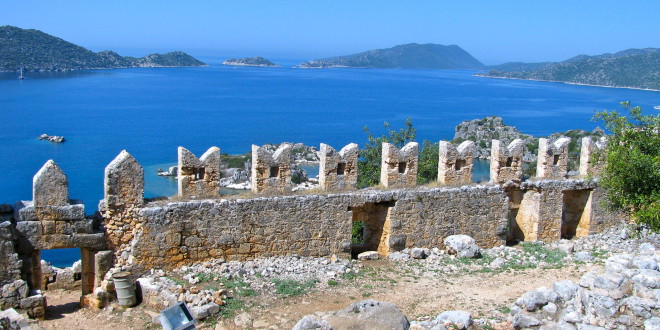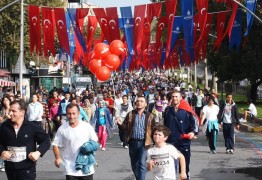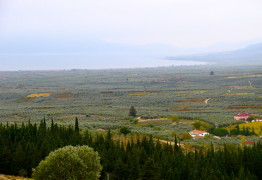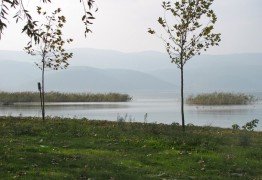For the last week, Sankar and I have been sightseeing in southwestern and southern Turkey. He calls our trip a mop-up tour since our goal was to visit places in the area that we had previously missed.
First, we headed to the southern Aegean coast, where three ruined Greek cities lie. We tromped through Priene, Miletus and Didyma.

| Temple of Athena at Priene |
 |
| Medusa, Didyma |
 |
| Temple inscription at Didyma |
It is hard to overestimate Roman influence in the ancient world. But seeing carved pillars and pediments scattered among weeds, and former metropolises abandoned on desolate hilltops reminded me that what is grand inevitably declines.

| Shrine to Apollo, Miletus
We enjoyed staying at a country inn near Kusadasi where guests ate dinner together. We met a witty German couple close to our age, and an adventurous younger couple, he from Nebraska and she from New Zealand.
After that, we headed several hours east to Aphrodisias, a much-praised Roman city we had somehow missed a couple years ago. We were not disappointed. In ancient times the city featured a school of sculpture, which provided a glimpse of Roman society.
|
 |
| Nero and his mother, Agrippina the Younger |
 |
| Friezes on Tiberius Portico, Aphrodisias |
 |
| Sculptures near Roman baths |
A late addition to our itinerary was Kekova. A Turkish friend had praised it as one of the loveliest spots in Turkey. Reachable by boat, Kekova is one of several islands off Turkey’s Mediterranean coast.
 |
| Village of Kale Koy (“Kale” means castle)
|
Our accommodations at nearby Kale Koy were simple, our hosts friendly, and the food we ate came straight from the sea. We climbed up to a Byzantine castle to gaze upon Lycian ruins, and took a boat ride to see parts of Kekova that sank in the second century AD.
 |
| Stairway to watery ruins |
 |
| Lycian rock-cut tombs, circa 300 B.C.
|
 |
| Fortunate young Kale Koy residents |
Our trip seemingly over, we headed north to Istanbul, prepared for two days of driving. We had reserved a hotel at the midpoint, Afyonkarahisar, and expected a provincial Anatolian town.
We were wrong. It was our turn to make a discovery: a town with lovely, restored Ottoman houses at the foot of a castle that sits high atop an ancient black rock. An annual jazz festival was in progress next to our hotel, and at a late evening concert, residents came up to welcome us and bought us cups of tea.
 |
| The black rock, used as a fortress since the Bronze Age |
 |
| Afyonhisar 10-year olds, delighted to meet a foreigner |








Wow, Sue! It’s incredible that you are able to take such great advantage of your time in Turkey (and that we benefit from your wonderful pictures and commentary). Thanks.
What an adventure!! Great post and beautiful pictures.